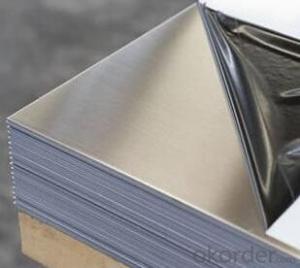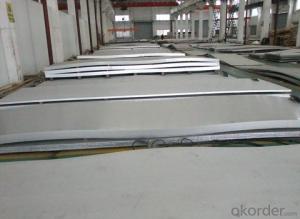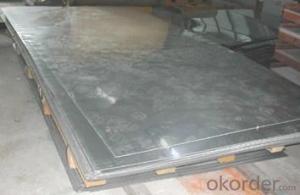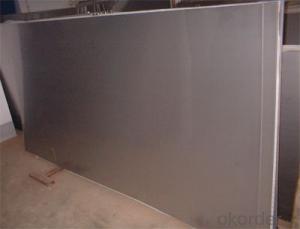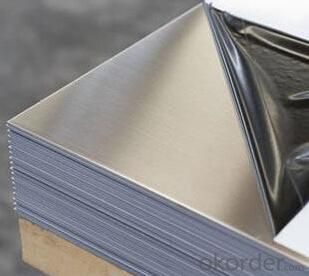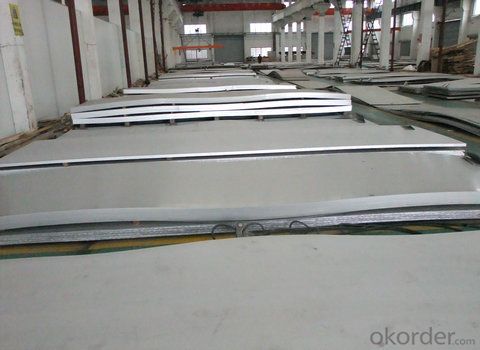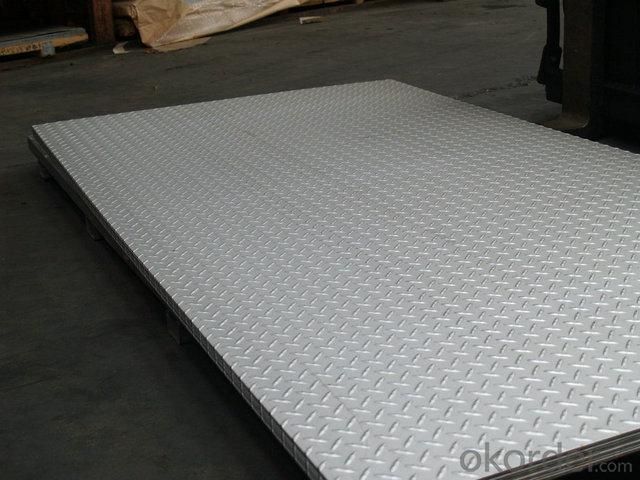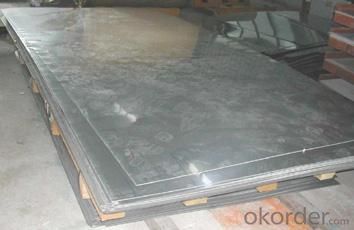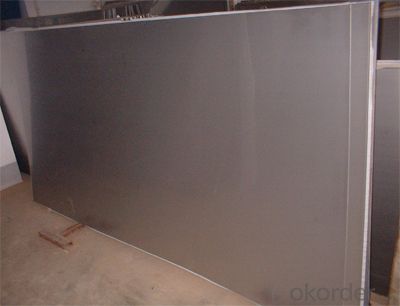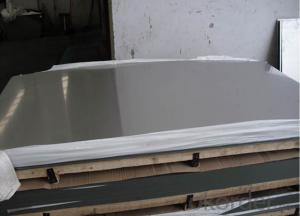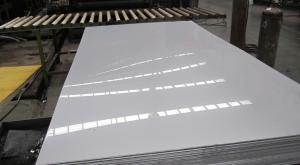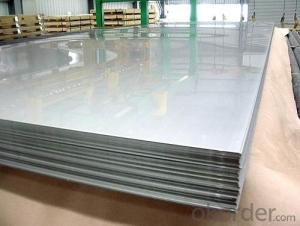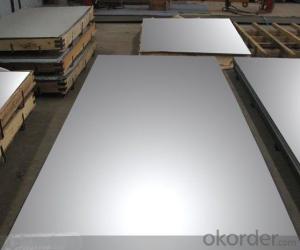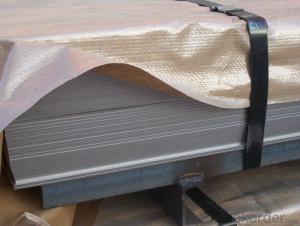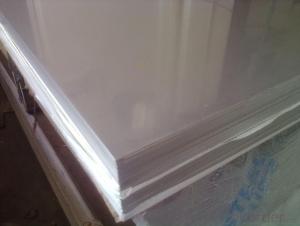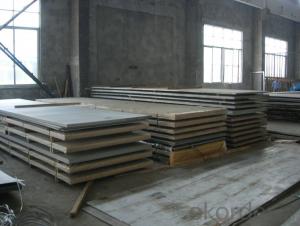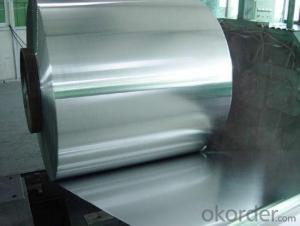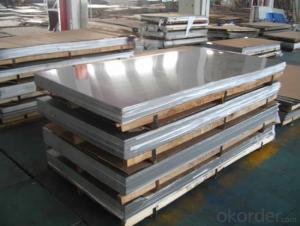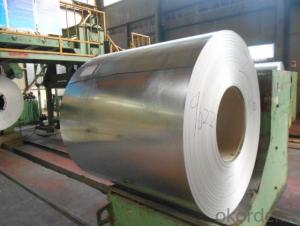Stainless Steel sheet and plate with Shine Treatment
- Loading Port:
- Shanghai
- Payment Terms:
- TT OR LC
- Min Order Qty:
- 10000 m.t.
- Supply Capability:
- 5000000 m.t./month
OKorder Service Pledge
OKorder Financial Service
You Might Also Like
Specifications of stainless steel
304 stainless Steel Plate
stainless steel plate,steel sheet,steel plate.
Standard: ASTM,GB,DIN,JIS,ISO,EN,etc.
TISCO stainless Steel Plate 304/NO.1 finished
stainless steel plate,steel sheet,steel plate
Standard: ASTM,GB,DIN,JIS,ISO,EN,etc.
Delivery short and low cost advantage.
Description of stainless steel:
stainless steel plate,hot rolled stainless steel plate,cold rolled stainless steel plate,stainless steel sheet,steel sheet,sheet
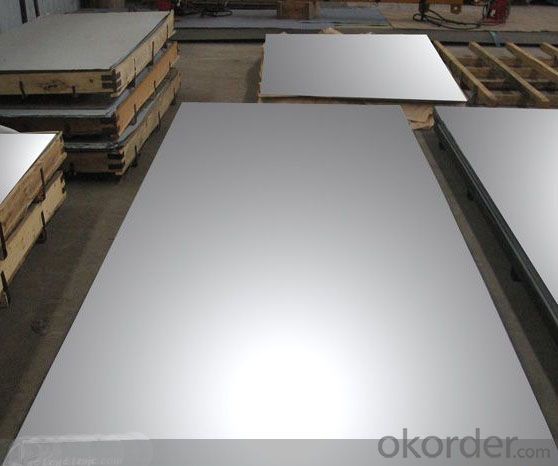
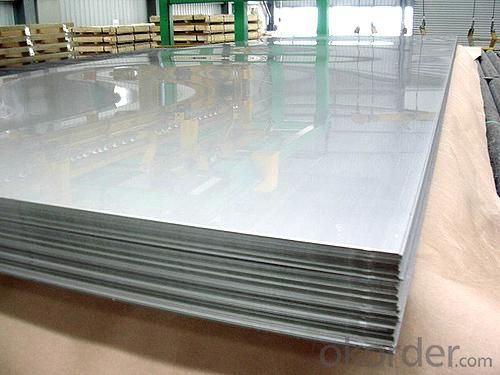

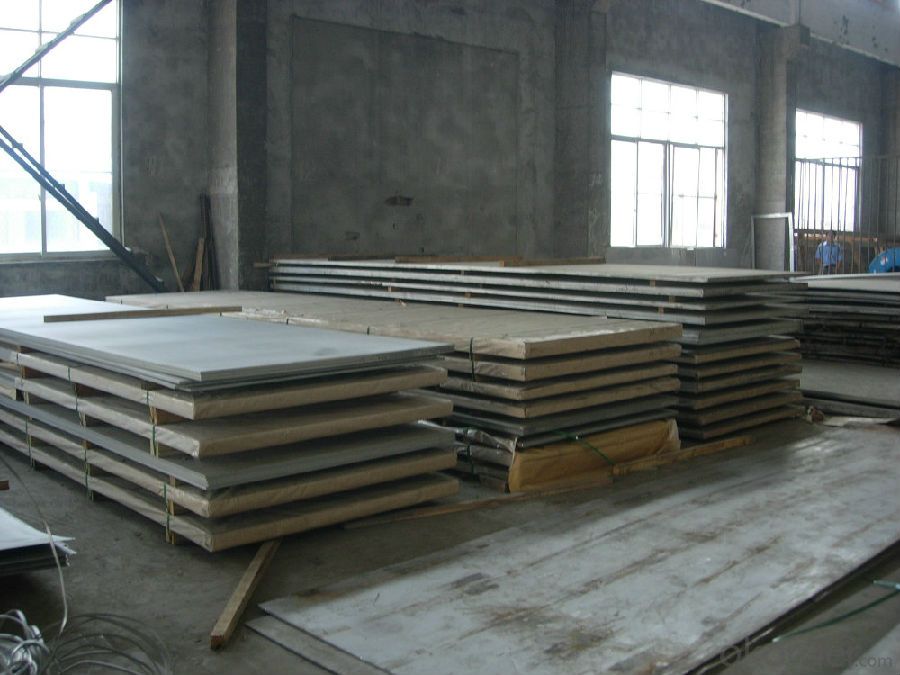
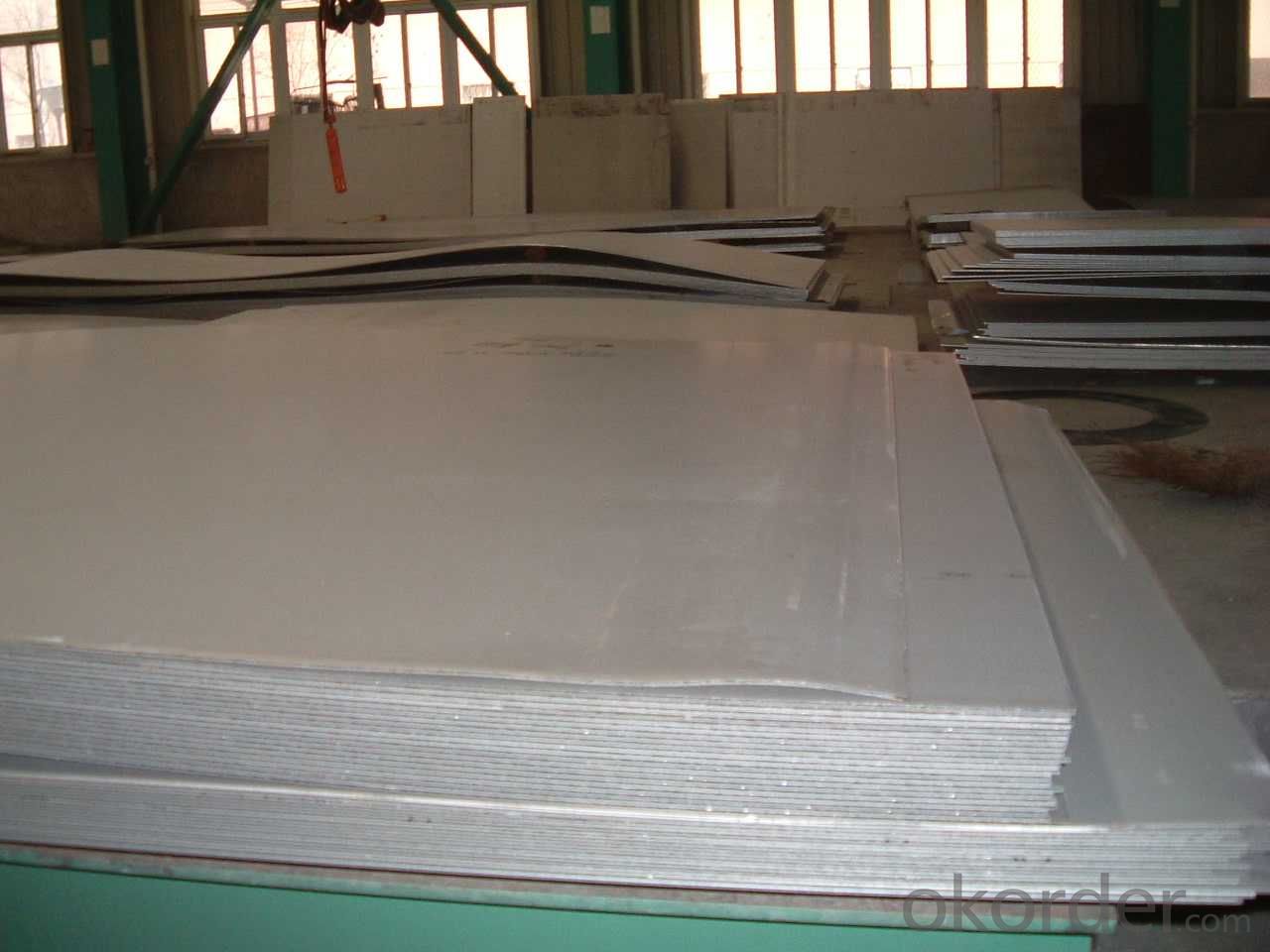
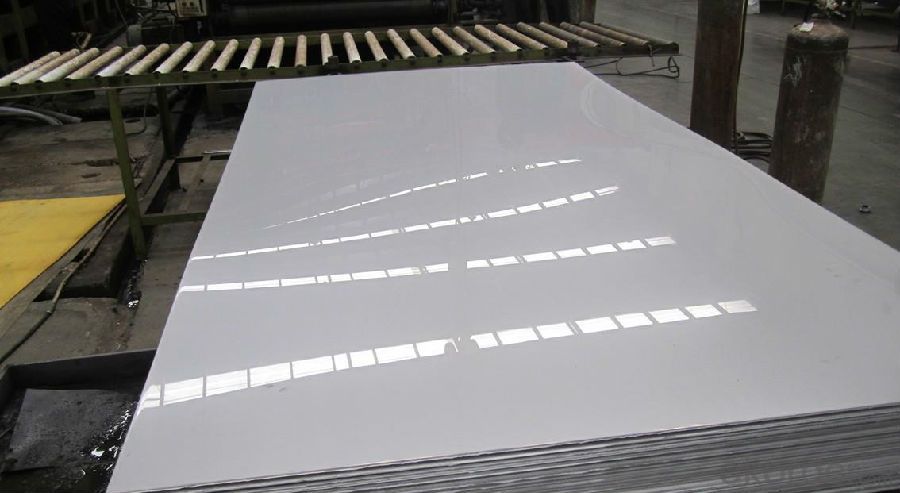
Material of stainless steel:
304,304L,309S,310S,316,316L,316Ti,317L,317L,321,347H,409,409L,410S,420,430,201,202,etc.
Thickness of stainless steel:
From 0.3mm to 100mm
Width of stainless steel:
1000mm,1219mm,1250mm,1500mm,1800mm,2200mm,2500mm or as your requirement
Length of stainless steel:
2000mm,2438mm,2500mm,6000mm,6096mm or as your requirement
Application of stainless steel:
Stainless steel plate applies to construction field, ships building industry, petroleum & chemical industries, war and electricity industries, food processing and medical industry, boiler heat exchanger, machinery and hardware fields. Our company has cooperative relation between the domestic agents. Stainless steel plate can be made accordingto the customers requirements. Fasten delivery. Quality assured.Welcome to order more.
Contacts
If you have any question,please feel free to contact us.
- Q: How do you clean stainless steel sheets?
- To clean stainless steel sheets, you can follow a simple and effective process. First, remove any loose dirt or debris from the surface by gently wiping it with a soft cloth or sponge. Next, prepare a cleaning solution by mixing warm water with a mild detergent or dish soap. Dip a non-abrasive sponge or cloth into the solution and gently scrub the stainless steel sheet in the direction of the grain. Avoid using abrasive materials or harsh chemicals as they can damage the surface. Rinse the sheet thoroughly with clean water to remove any soap residue. Finally, dry the sheet with a soft cloth or towel, again following the grain to prevent water spots or streaks. This process will help maintain the shine and cleanliness of your stainless steel sheets.
- Q: Are stainless steel sheets suitable for oil and gas applications?
- Yes, stainless steel sheets are highly suitable for oil and gas applications due to their superior corrosion resistance, high strength, and ability to withstand extreme temperatures and pressure conditions commonly found in the oil and gas industry. Additionally, stainless steel sheets offer excellent durability, easy maintenance, and long-lasting performance, making them an ideal choice for various equipment and structures used in oil and gas exploration, production, and processing.
- Q: Can stainless steel sheets be used in food processing or medical applications?
- Yes, stainless steel sheets can be used in food processing and medical applications. Stainless steel is highly resistant to corrosion and is easy to clean, making it suitable for use in environments that require strict hygiene standards such as food processing plants and medical facilities. It is also non-reactive with food and medical substances, ensuring the safety and quality of the products being processed or treated.
- Q: How do you prevent warping of stainless steel sheets?
- To prevent warping of stainless steel sheets, it is important to handle and store them properly. This includes avoiding excessive heat exposure, ensuring even distribution of weight during storage, and using appropriate support structures during fabrication processes to prevent distortion. Additionally, controlling the cooling process after welding or cutting stainless steel sheets can also help minimize warping.
- Q: How do stainless steel sheets resist corrosion?
- Stainless steel sheets resist corrosion due to their unique composition and protective oxide layer. Stainless steel is made up of iron, chromium, and other alloying elements such as nickel and molybdenum. The presence of chromium in stainless steel is crucial for its corrosion resistance. When exposed to oxygen, chromium forms a thin and invisible oxide layer on the surface of the stainless steel, known as the passive layer. This passive layer acts as a barrier that prevents oxygen and moisture from reaching the underlying metal, thus protecting it from corrosion. It is this layer that gives stainless steel its name, as it remains "stainless" or free from rust and corrosion. The chromium oxide layer is self-repairing and can reform if damaged or scratched, ensuring the continued protection of the stainless steel. This property allows stainless steel sheets to be used in various environments, including those with high humidity, exposure to chemicals, and even saltwater. Additionally, the alloying elements like nickel and molybdenum enhance the corrosion resistance of stainless steel. Nickel increases the stability and strength of the passive layer, while molybdenum improves resistance to pitting and crevice corrosion. Furthermore, stainless steel sheets can be further protected against corrosion through surface finishes, such as polishing or passivation. These processes remove any contaminants or impurities from the surface and promote the formation of a more robust and uniform passive layer. Overall, the combination of chromium, other alloying elements, and the protective oxide layer make stainless steel sheets highly resistant to corrosion, providing durability and longevity in various applications.
- Q: What are the features of stainless steel plates?
- Can withstand oxalic acid, sulfuric acid iron sulfate, nitrate, nitrate acid and hydrofluoric acid, sulfuric acid copper sulfate, phosphoric acid, formic acid and acetic acid and various acid corrosion, widely used in chemical, food, medicine, papermaking, petroleum, atomic energy industry, as well as construction, kitchen utensils, cutlery, household appliances, vehicles of all kinds of parts.
- Q: What are the different types of stainless steel sheet textures available?
- There are several different types of stainless steel sheet textures available, each offering a unique aesthetic and functional appeal. Some of the commonly used textures include: 1. Brushed: This texture is achieved by brushing the stainless steel surface with abrasive materials in a unidirectional pattern. It creates a smooth, satin-like finish that is commonly seen in kitchen appliances and decorative applications. 2. Mirror: As the name suggests, this texture creates a highly reflective and mirror-like surface. It is achieved by polishing the stainless steel sheet using progressively finer abrasive materials until a reflective finish is obtained. Mirror-textured stainless steel sheets are often used in architectural and decorative applications. 3. Embossed: This texture involves imprinting patterns or designs onto the stainless steel sheet using embossing rollers. The raised patterns add depth and visual interest to the surface, making it a popular choice for interior design applications such as wall cladding or elevator panels. 4. Perforated: This texture involves creating a pattern of holes or perforations on the stainless steel sheet. It allows for the passage of light, air, or liquids while adding a decorative element to the surface. Perforated stainless steel sheets are commonly used in architectural, interior design, and filtration applications. 5. Etched: This texture is achieved by chemically etching the stainless steel surface using acid or other corrosive substances. The etching process creates a pattern or design on the surface, resulting in a visually appealing, textured finish. Etched stainless steel sheets are often used in decorative applications such as signage, elevator doors, or wall panels. 6. Hammered: This texture involves using hammers or other tools to create a hammered or dimpled pattern on the stainless steel sheet. It adds a rustic, textured look to the surface and is commonly used in architectural and decorative applications. These are just a few examples of the different types of stainless steel sheet textures available. Depending on the desired aesthetic and functional requirements, there are various other textures and finishes that can be applied to stainless steel sheets to achieve different looks and effects.
- Q: Are stainless steel sheets suitable for hygienic applications?
- Yes, stainless steel sheets are highly suitable for hygienic applications. Stainless steel has excellent corrosion resistance properties, making it ideal for environments that require strict cleanliness and hygiene standards. It is non-porous, which means it does not absorb liquids or harbor bacteria, making it easy to clean and maintain. Additionally, stainless steel has a smooth and polished surface, which further prevents the accumulation of dirt, grime, and bacteria. Its durability and strength make it resistant to scratches and dents, ensuring a long-lasting and hygienic surface. Stainless steel sheets are commonly used in the food and beverage industry, pharmaceutical industry, healthcare facilities, and laboratories due to their hygienic properties.
- Q: Is stainless steel plate permitted to contact galvanized material?
- The reason why stainless steel can not be welded or contacted directly with ordinary steel is to prevent corrosion of stainless steel, not to prevent corrosion of ordinary steel.
- Q: Can stainless steel sheets be used for decorative signage?
- Indeed, decorative signage can be fashioned from stainless steel sheets. This highly adaptable material presents a sophisticated and contemporary look, rendering it a favored option for diverse purposes, including signage. Its robustness and immunity to corrosion make it fitting for employment both indoors and outdoors. Stainless steel sheets can undergo laser cutting, engraving, or etching to produce elaborate patterns, logos, or lettering, thereby offering boundless potential for decorative signage creation. Whether intended for commercial, residential, or public areas, stainless steel sheets offer an elegant and enduring resolution for decorative signage needs.
Send your message to us
Stainless Steel sheet and plate with Shine Treatment
- Loading Port:
- Shanghai
- Payment Terms:
- TT OR LC
- Min Order Qty:
- 10000 m.t.
- Supply Capability:
- 5000000 m.t./month
OKorder Service Pledge
OKorder Financial Service
Similar products
Hot products
Hot Searches
Related keywords
